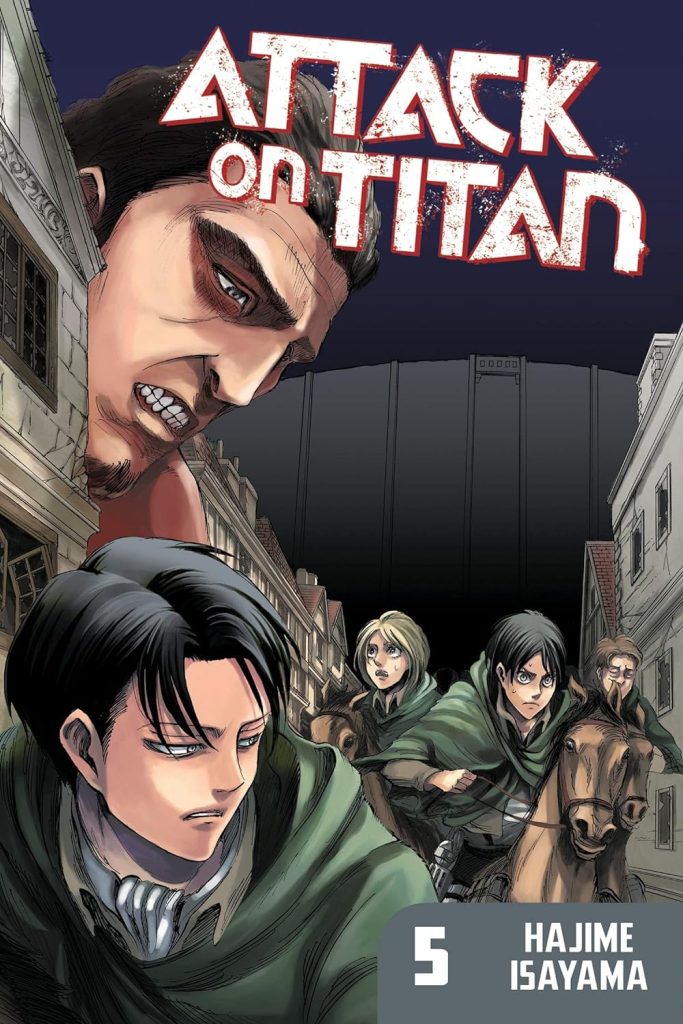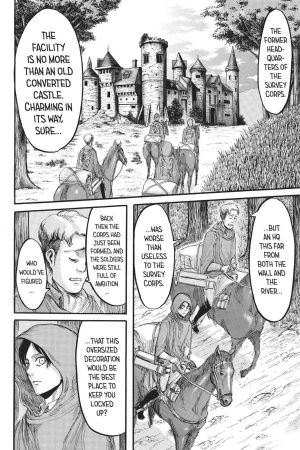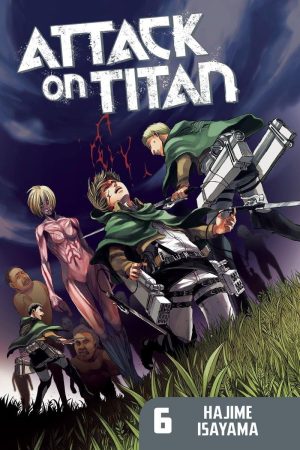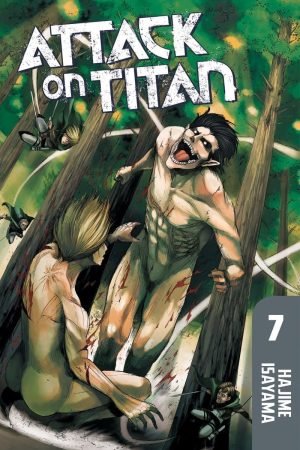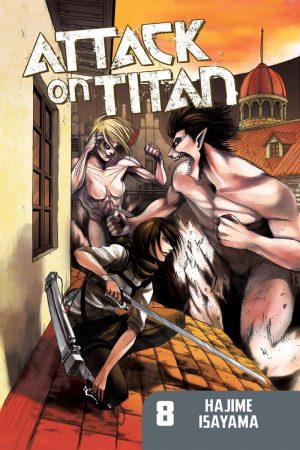Review by Frank Plowright
To date Eren Yeager has been Attack on Titan’s core character, somehow able to transform into a form akin to the Titans who’re threatening humanity. The reasons for this remain unknown, but are something to do with research carried out by Eren’s missing father. Attack on Titan 4 ended with the decision taken to send a mission to Eren’s home village despite the danger of it being within an area over-run with Titans. Don’t look for completion here. While Hajime Isayama isn’t a storyteller who lingers, there are still other matters to be dealt with.
With this volume Isayama expands the cast given brief biographies beneath their portraits on the opening pages from the previous three people to 14, indicating the groundwork carried out in establishing them in Attack on Titan 4. Isayama opens here with another glimpse into the past before moving to Eren’s trial, which is used to pass on more information about the societies within the protective walls, and the primary concerns of various representatives. The result is an extremely unconventional trial.
When the mission eventually starts it’s reinforced that while there are wall mounted cannons and greater knowledge, it’s essentially a feudal society with horses the prime means of transportation. When Eren is placed under Captain Levi’s supervision in a survey patrol we learn experiments have been carried out on captured Titans, and their bodies seem to defy known science.
It’s information worth knowing when Isayama finally moves back to the action. Like the traditional infantry, it’s explained that survey patrol members are likely to have brief lives, and the final chapter follows them in an area infested with Titans.
While this hasn’t been the non-stop rush of earlier volumes, Isayama still covers a considerable amount of ground in setting up a crisis to be dealt with in Attack on Titan 6. Alternatively, the larger format second Attack on Titan Omnibus gathers that volume along with this.
